
Warburton is a village and civil parish within the Metropolitan Borough of Trafford in Greater Manchester, England. Historically in Cheshire, Warburton lies on the south bank of the River Mersey between the borough of Warrington and Greater Manchester. In the 21st century, the village remains predominantly rural. Altrincham is the nearest town. According to the 2001 census, the parish had a population of 286.
Wells Cathedral School is a co-educational independent school located in Wells, Somerset, England. The school is one of the five specialist musical schools for school-age children in the United Kingdom, along with Chetham's School of Music, the Yehudi Menuhin School, the Purcell School and St. Mary's Music School, Edinburgh. The Head Master, Alastair Tighe, is a member of the Headmasters' Conference.
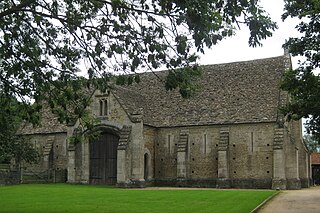
The Somerset Rural Life Museum is situated in Glastonbury, Somerset, UK. It is a museum of the social and agricultural history of Somerset, housed in buildings surrounding a 14th-century barn once belonging to Glastonbury Abbey.

Dunham Massey is a civil parish in the Metropolitan Borough of Trafford, Greater Manchester, England. The parish includes the villages of Sinderland Green, Dunham Woodhouses and Dunham Town, along with Dunham Massey Hall and Park, formerly the home of the last Earl of Stamford and owned by the National Trust since 1976. Dunham Massey was historically in the county of Cheshire, but since 1974 has been part of Trafford Metropolitan Borough; the nearest town is Altrincham. At the 2001 census, the parish had a population of 475.
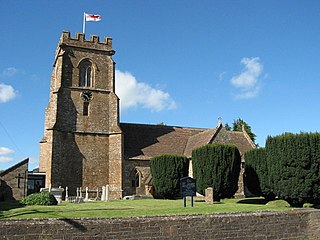
Preston Plucknett is a suburb of Yeovil in Somerset, England. It was once a small village, and a separate civil parish until 1930, when it was absorbed into the neighbouring parishes of Yeovil, Brympton and West Coker. It was listed in the Domesday Book of 1086 as "Preston" when its lord was Ansger of Montacute. In the 13th century, Alan de Plugenet was lord of the manor and added his surname to Preston. Following the 20th century expansion of Yeovil, Preston Plucknett became little more than a suburb of the town. Throughout the centuries the spelling and pronunciation of the name has changed and evolved until it became the present day "Preston Plucknett." The parish of Preston Plucknett was part of the Stone Hundred.
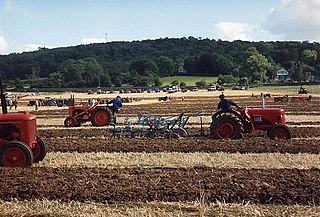
Brockley is a village and civil parish in Somerset, England. The parish is within the Unitary authority of North Somerset, about 3 miles (4.8 km) south of Nailsea, and includes the village of Chelvey. According to the 2011 census it had a population of 277.

Stanton Drew is a small village and civil parish within the Chew Valley in Somerset, England, situated north of the Mendip Hills, 8 miles (12.9 km) south of Bristol in the Bath and North East Somerset Unitary Authority.
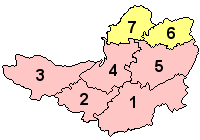
The Grade I listed buildings in Somerset, England, demonstrate the history and diversity of its architecture. The ceremonial county of Somerset consists of a non-metropolitan county, administered by Somerset County Council, which is divided into five districts, and two unitary authorities. The districts of Somerset are West Somerset, South Somerset, Taunton Deane, Mendip and Sedgemoor. The two administratively independent unitary authorities, which were established on 1 April 1996 following the breakup of the county of Avon, are North Somerset and Bath and North East Somerset. These unitary authorities include areas that were once part of Somerset before the creation of Avon in 1974.
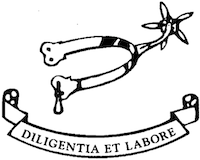
Brymore Academy is a boys' secondary school with academy status, located in Cannington, Bridgwater, Somerset, England. It is a day and boarding school for pupils aged 11 to 17 years and had 192 boys on the roll in 2015, 115 of them boarders. It was established in 1951 by Somerset County Council at a cost of £6,000 as a Secondary Technical School of Agriculture.

Bratton Court in the hamlet of Bratton within the parish of Minehead Without, Somerset, England was built as a manor house, with a 14th-century open hall and 15th-century solar hall. It is within the Exmoor National Park and has been designated as a Grade I listed building. It was enlarged in the 17th century and extensively altered in the late 19th and early 20th centuries. It is now a farmhouse divided into 2 dwellings. The gatehouse and the barn at the west end of the courtyard date from the fifteenth century and are also listed as Grade I buildings.
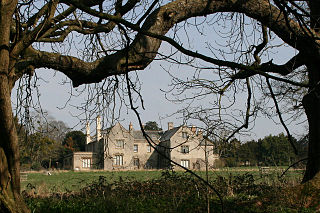
Poundisford Park north of Pitminster, Somerset, England is an English country house that typifies progressive house-building on the part of the West Country gentry in the mid-16th century. The main house was built for William Hill around 1550 and has been designated as a Grade I listed building.

Cothelstone Manor in Cothelstone, Somerset, England was built in the mid-16th century, largely demolished by the parliamentary troops in 1646 and rebuilt by E.J. Esdaile in 1855–56.

Castle Street in Bridgwater, Somerset, England was built in the 1720s, on a site previously occupied by Bridgwater Castle, by Benjamin Holloway or Fort and Shepherd, the Duke's London surveyors for James Brydges, 1st Duke of Chandos. It was originally called Chandos Street. Many of the buildings have been designated as Grade I Listed buildings.
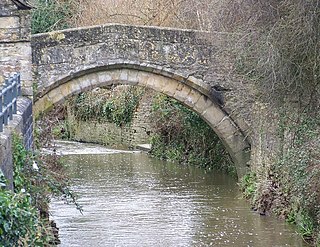
Bow Bridge is a 15th-century Packhorse bridge over the River Brue in Plox, Bruton, Somerset, England. It has been designated as a Grade I listed building, and Scheduled Ancient Monument.

Earnshill House in Hambridge, near Curry Rivel, Somerset, England is a manor house, set in parkland. It was built in 1725 for Henry Combe, a Bristol merchant by John Strachan. It has been designated as a Grade I listed building.

Wigborough Manor House is a manor house in South Petherton, Somerset, England. It was partly built in 1585, although it was never completed to the original designs and was subsequently modified. It has been designated as a Grade I listed building.

The Abbey Barn in Preston Plucknett, Yeovil, Somerset, England was built around 1420 by John Stourton, in conjunction with the Abbey Farm House. It has been designated as a Grade I listed building, and Scheduled Ancient Monument.

Abbey Farmhouse is a detached house in Montacute, Somerset, England, which incorporates the gateway of the medieval Montacute Priory. It was built in the 16th century and has been designated as a Grade I listed building.

Fairfield House is a historic house in Stogursey, Somerset, England. A house existed on the site from the 12th century and it has been owned by the same family since that time. The current building is largely 16th-century, but has undergone various remodellings since then. It is designated as a Grade II* listed building.



















